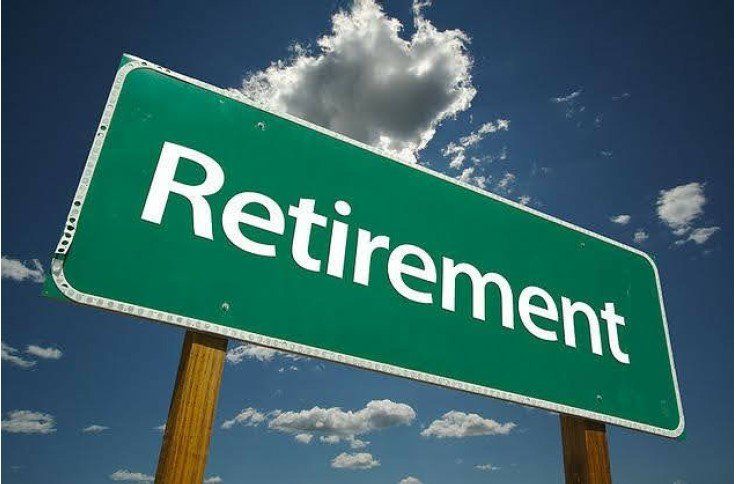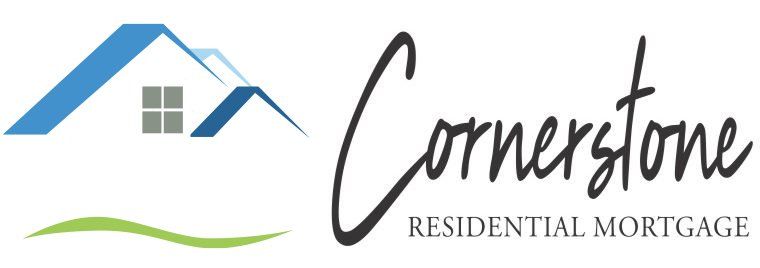Looking to Buy or Refinance a Home?
Apply Today With:
TIM ANDERS
|
SONYA SIMPSON
Phone:
828-650-9422
Toll Free:
866-463-8411
Blog Post
Retiring With a Mortgage? 5 Strategies to Make It Work
- By Admin
- •
- 21 Oct, 2021

Are you starting to seriously plan for retirement within the next decade or so? As you crunch the numbers, one big factor in most retirement
planning is the home mortgage. Although many people want to enter into retirement without a mortgage, this isn't always possible. So, if you have to carry a mortgage as a retiree, how can you approach it for success? Here are five strategies anyone can try.
1. Extend the Terms for Lower Payments
For most retirees, the main motivation to get rid of a mortgage is to reduce monthly obligations. This increases financial and housing security as
they shift to a fixed or limited income stream. But you can accomplish this as well by reducing that monthly payment to a minimum amount that's easily doable.
You have several choices to make this happen. The easiest may be to refinance your existing loan into one with much lower interest rates, no
mortgage insurance, and fewer fees. Or you could refinance what you still owe but extend the terms for several - or many - more years.
2. Shorten the Terms and Pay Your Mortgage Off Early
Just because you have a mortgage when you retire doesn't mean you will have it forever. The early years of retirement are the most financially
flexible years for many people. You can often work part-time, do consulting for your old employer, or start a side gig for extra income. Use this
time to pay off that mortgage while you feel good and have more options. The extra effort may also help you transition, as it keeps your mind and body active.
So, if you have a current mortgage or need to refinance to a loan that will carry over into retirement, don't let this deter you from retiring. Keep
the length of the loan limited so you can take advantage of this transitional retirement period without burdening your later retirement years.
3. Downsize for Lower Payments
Many retirees plan to downsize their living arrangements. But downsizing doesn't automatically mean limiting yourself to a home you can pay for outright.
Armed with a chunk of money from your prior home sale and a more minimal lifestyle, you can find a good compromise between cost and
comfort. Use the combination of your down payment and home size to find a low mortgage that you can easily live with on retirement income.
4. Replace Bad Mortgages With Good Ones
Having a mortgage may not be the real problem for you. What if it's the mortgage terms themselves? A mortgage with high interest rates, balloon payments, adjustable rates, or private mortgage insurance can all cost much more than your loan needs to. These extras may make the mortgage unsustainable. So, rather than focus on getting rid of a mortgage entirely, focus on ridding yourself of onerous terms.
5. Use Your Mortgage to Pay Off Debt
Good mortgage loans can serve as a beneficial type of debt. With a low rate and fixed payments, they are less risky than many other debts,
including student loans, credit cards, payday loans, and even personal or vehicle loans. Consider whether these other expenses are what's really
holding you back from retirement. If so, use your mortgage to get rid of these potentially damaging credit sources.
You might, for instance, refinance the mortgage and use the monthly savings to pay off debt or take cash from your refinance. Or put a low-cost
mortgage on autopilot and focus instead on getting rid of riskier debts before retirement.
Want to know more about mortgage options as you head into retirement? Would you like to find out if you can get better terms? Or how much
you might be able to take out in refinancing? No matter what questions you have, the best place to start finding answers is Cornerstone
Residential Mortgage. Call today to speak with a mortgage professional.
planning is the home mortgage. Although many people want to enter into retirement without a mortgage, this isn't always possible. So, if you have to carry a mortgage as a retiree, how can you approach it for success? Here are five strategies anyone can try.
1. Extend the Terms for Lower Payments
For most retirees, the main motivation to get rid of a mortgage is to reduce monthly obligations. This increases financial and housing security as
they shift to a fixed or limited income stream. But you can accomplish this as well by reducing that monthly payment to a minimum amount that's easily doable.
You have several choices to make this happen. The easiest may be to refinance your existing loan into one with much lower interest rates, no
mortgage insurance, and fewer fees. Or you could refinance what you still owe but extend the terms for several - or many - more years.
2. Shorten the Terms and Pay Your Mortgage Off Early
Just because you have a mortgage when you retire doesn't mean you will have it forever. The early years of retirement are the most financially
flexible years for many people. You can often work part-time, do consulting for your old employer, or start a side gig for extra income. Use this
time to pay off that mortgage while you feel good and have more options. The extra effort may also help you transition, as it keeps your mind and body active.
So, if you have a current mortgage or need to refinance to a loan that will carry over into retirement, don't let this deter you from retiring. Keep
the length of the loan limited so you can take advantage of this transitional retirement period without burdening your later retirement years.
3. Downsize for Lower Payments
Many retirees plan to downsize their living arrangements. But downsizing doesn't automatically mean limiting yourself to a home you can pay for outright.
Armed with a chunk of money from your prior home sale and a more minimal lifestyle, you can find a good compromise between cost and
comfort. Use the combination of your down payment and home size to find a low mortgage that you can easily live with on retirement income.
4. Replace Bad Mortgages With Good Ones
Having a mortgage may not be the real problem for you. What if it's the mortgage terms themselves? A mortgage with high interest rates, balloon payments, adjustable rates, or private mortgage insurance can all cost much more than your loan needs to. These extras may make the mortgage unsustainable. So, rather than focus on getting rid of a mortgage entirely, focus on ridding yourself of onerous terms.
5. Use Your Mortgage to Pay Off Debt
Good mortgage loans can serve as a beneficial type of debt. With a low rate and fixed payments, they are less risky than many other debts,
including student loans, credit cards, payday loans, and even personal or vehicle loans. Consider whether these other expenses are what's really
holding you back from retirement. If so, use your mortgage to get rid of these potentially damaging credit sources.
You might, for instance, refinance the mortgage and use the monthly savings to pay off debt or take cash from your refinance. Or put a low-cost
mortgage on autopilot and focus instead on getting rid of riskier debts before retirement.
Want to know more about mortgage options as you head into retirement? Would you like to find out if you can get better terms? Or how much
you might be able to take out in refinancing? No matter what questions you have, the best place to start finding answers is Cornerstone
Residential Mortgage. Call today to speak with a mortgage professional.
Share
Tweet
Share
Mail
Cornerstone Residential Mortgage
MortgageMatchmakers.com
56 White Oak Road
Arden, NC 28704
Phone:
828-650-9422
Toll Free:
866-463-8411
Email Us:
ashevilledistribution@cornerstonemtg.net
Business Hours:
Monday-Friday, 9 a.m.-5 p.m.
Licensed | Business NMLS# 69551
GoPrime Privacy Policy
YP REVIEWS

Alice D. On 2/18/2021
Have used Cornerstone Residential Mortgage twice now. They helped me find great financing on a modular home and land package (permanent foundation) and then again to refinance a few years later. They got me a great interest rate both times. They are professional, wonderful communication, knowledgeable, and are genuinely present and available during the entire process. It feels like doing business with friends. I can hot recommend them highly enough!

Larry T. On 11/20/2020
If you are looking to get a home loan or re-finance then you need to call cornerstone and talk to Sonya. She and her team are the most helpful and pleasant people you will ever deal with. As a first-time buyer, I was totally intimidated by the process but they not only made it easy to understand but also made the whole process pleasant from start to finish. CALL THEM!

Pete M. On 11/06/2020
Sonya and her team are absolutely incredible! If you don't call Cornerstone first, you're wasting your time. The customer service, professionalism and respect that you receive as a customer is far beyond compare. I cannot say enough good things about these ladies. They have made my buying experience from the first call to closing day a breeze! Not to mention saving me tons of money! Thank you so much to everyone at Cornerstone Mortgage! I will recommend them to everyone I know. Don't forget to ask Sonya if she knows a fantastic realtor...Here's a hint (she does)!

Michelle P. On 08/30/2019
My husband and I highly recommend Cornerstone Residential Mortgage. Sonya, Kelly and Leslie are all great to work with! Very informative, professional and great customer service. Being a first-time home buyer, I had A LOT of questions. They would answer all my questions and stayed in contact with me during the whole process. We are now homeowners!!! Thank you to all at Cornerstone that made it happen!!!

Corrie B. On 08/08/2019
Very thankful for the whole team at Cornerstone Residential, who walked us through the purchase of our first home with ease and expertise. The whole process was stress-free and everything was well communicated. They were patient as we asked many "newbie" questions and were genuinely caring in their responses. Sonya and Leslie were awesome!! Couldn't recommend more highly.

Dorothy T. On 04/18/2019
Sonya, Kelly, and Leslie were wonderful at walking my husband and I through the entire process of purchasing our first home. We felt incredibly supported by them and their knowledge of the process as they held our hands through the whole thing. We both truly felt they all had our best interest in mind when explaining things. We felt like the entire office knew us personally with each interaction. They did an excellent job at keeping up communication and informing us of every step. They truly made the whole process way easier than what we have heard our friends experience. We have already recommended Cornerstone to several of our friends and family members. We love our new house and are so happy we had such an amazing team to help us get home! Thanks Cornerstone!!

Nigel B. On 01/31/2019
They are very professional. Whenever I called them they were always there and returned my calls if they could not. Very informative through the transaction.
Very nice people to work with. Would do business again.

Luschanee On 10/03/2018
This place was absolutely wonderful. Everyone was very friendly and treated us like family!! Buying our first home was a great experience becaue of the people here at Cornerstone Lending!

Jonathan C.
On 03.26.2018
Cornerstone guided us through the entire process. They answered questions promptly and where always available.

Amy N.
On 03.22.2018
The loan process was smooth and seamless. Sonya and her team know their stuff. I would definitely recommend Cornerstone to a friend.
Looking to Buy or Refinance a Home?
Apply Today With:
Content, including images, displayed on this website is protected by copyright laws. Downloading, republication, retransmission or reproduction of content on this website is strictly prohibited. Terms of Use
| Privacy Policy


